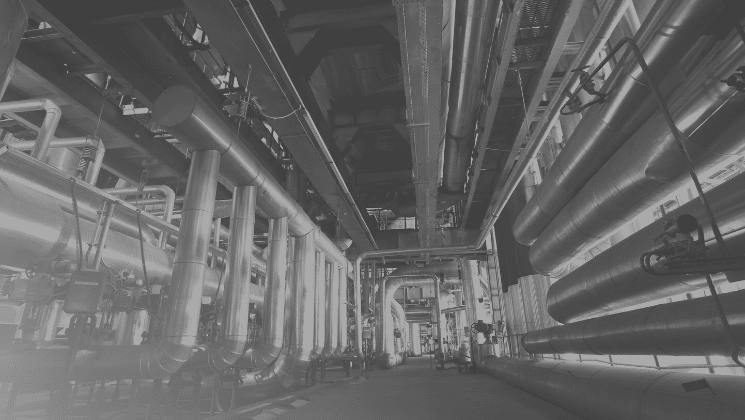How’s your maintenance budget?
Chances are you think it’s not enough.
And you resent that it’s been cut back for the umpteenth time.
Every organisation should have the necessary budget to execute the required maintenance.
But that’s often not the case, so…
“How do you stay reliable despite numerous maintenance budget cuts?”
Now, this is an all-too-common problem in our industry.
When the going gets tough, and the company needs to tighten their belt… it’s usually the maintenance budget that gets slashed. After all, maintenance has a reputation of being a ‘cost-centre’. A ‘necessary evil’.
Sometimes, there’s nothing we can really do about those budget cuts. And as a result, many maintenance practitioners say they can’t do their jobs well. They believe they can’t achieve a reliable plant because they lack the financial support they need.
But let me tell you, it’s not impossible. There’s a way to achieve high reliability WITHOUT spending big amounts of money.
In this article, I’ll talk about 3 simple strategies you can implement with your own team today that does NOT need a big maintenance budget. Strategies that can significantly improve your plant’s reliability.
And both research and my own 20+ years of experience working in the industry have proven the these strategies to work.
The real cost of budget cuts
Before we delve into those three strategies, why do we need them in the first place? Isn’t it fine to simply let your organisations reduce your maintenance budget?
On the surface, this might seem logical. After all, if equipment is running smoothly today, can’t we skip a few maintenance checks and save money?
But the real question organisations need to ask is:
What are the long-term consequences of unsustainable budget cuts?
One of the most immediate consequences of maintenance budget cuts is increased downtime. When regular maintenance tasks are deferred or overlooked, your machinery is more likely to break down unexpectedly. This not only disrupts production but can also result in costly emergency repairs.
And this ties into another significant cost: the shortened lifespan of assets. It’s a simple truth that well-maintained equipment lasts longer. So, by cutting corners on maintenance today, organisations will find themselves facing higher replacement costs sooner than anticipated.
But beyond the machinery and equipment, there’s a human factor to consider. Safety is paramount in any organization. And inadequate maintenance can compromise the safety of equipment, leading to potential hazards. Any accidents or injuries stemming from poorly maintained machinery can have devastating consequences, both in terms of human suffering and potential legal and financial penalties.
While the immediate savings from cutting maintenance budgets might be tempting, the long-term ramifications can be far more costly. Instead, you need a more sustainable approach to achieving reliability and reducing costs. And that’s where these 3 strategies come in.
3 strategies to stay reliable with minimal costs
Strategy #1: Implementing Planning & Scheduling
Waste is common in every organisation.
But in a typical maintenance organisation, there tends to be a LOT of waste.
Waste in the form of:
- Delays and lost time during the completion of jobs;
- Incorrect identification of materials resulting in false starts, delays or makeshift repairs;
- Poor co-ordination of personnel resulting in excessive waiting and idle time;
- And bad timing of equipment isolation and shutdown resulting in excessive downtime.
By having an effective planning & scheduling process in place, you can eliminate this waste and increase your workforce by up to 35% without hiring new people.
This means you get more things done faster;
You make the most out of your limited time and resources; and
You reduce the amount of work in your backlog.
For some organisations, this increase in work productivity can mean hundreds of thousands, to millions of dollars a year.
Strategy #2: Optimise your Preventive Maintenance
Most Preventive Maintenance Programs out there are full of tasks that don’t add value. And that’s because they were never developed properly to begin with.
As a result, you’re spending a lot of effort and resources on maintenance but still experience unacceptable failures.
As John Moubray, the father of RCM II, pointed out in his book “Reliability Centered Maintenance”, typically between 40% – 60% of the PM tasks in a preventive maintenance program add little value.
Some of the most common problems are:
- Tasks are duplicated.
- Tasks are done too frequently or not frequent enough
- Tasks are not effective at addressing the failure mode
- Too many fixed time, intrusive overhaul tasks that would be more effective, less costly and less disruptive to production if they were condition-based.
- Lack of using existing failure data and experience to set good task frequencies.
And that’s because they don’t follow the 9 Principles of an Effective PM Program.
By optimising your preventive maintenance program, you can remove up to 50% of your PM tasks while still improving your organisation’s reliability.
Strategy #3: Defect Elimination
Around 80% of failures that occur in a plant have occurred before.
What happens in most organisations that deal with these repeat failures?
We plan for these failures.
We write job plans.
We hold extra spares.
And when then failure happens again, we can fix it fast.
We get better and better at fixing failures.
That’s great, right?
Maybe.
Chances are that you could be a lot greater if instead of fixing that failure over and over again you actually fixed the source of the failure. If you fixed the defect that is causing that failure.
Research done by Winston Ledet whilst working for Dupont in the 1990s has shown that when you implement Planning & Scheduling, Preventive Maintenance and Defect Elimination…
…you can reduce your downtime by 90%.
About 30% of that reduction in downtime is because of Planning & Scheduling and Preventive Maintenance.
And about 60% is the result of Defect Elimination.
That’s why you need to start applying Root Cause Analysis and establish a Defect Elimination culture to make big strides in improving your reliability.
Training and Upskilling your Team
Alright, so how do you start applying these strategies?
Through training your team!
You can only achieve reliability through these strategies if your team is well-equipped and geared up! On the other hand, a lack of training can have far-reaching negative consequences in maintaining reliability. And you don’t want that right?
That is why upskilling and empowering your team with knowledge is essential to implement the three strategies mentioned above. And if you look closely, these strategies don’t require expensive software or contractors.
In fact, they can be implemented by your own team right now. That’s why if you need help training your team on these 3 strategies, then check out our online training courses using this link below.

Final thoughts
Don’t shy away from the challenge of budget constraints.
Instead, see them as opportunities to prove that reliability is something we can achieve without big expenses.
Staying reliable despite numerous budget cuts is not only possible but also achievable with the three strategies I showed you today.
Through implementing planning & scheduling, optimizing preventive maintenance, and defect elimination— you can achieve reliability.


